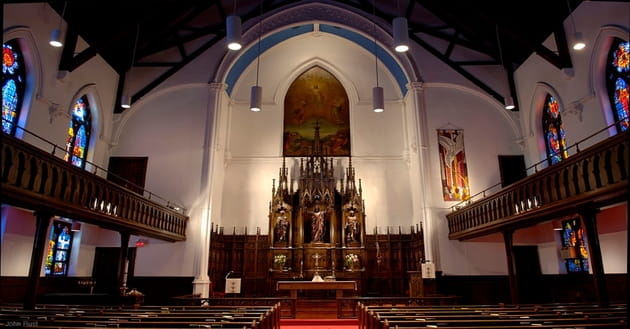Approximately 81 million people identify as Lutherans, of whom 74.2 million belong to the Lutheran World Federation. They are represented in every state where people live, including Columbus, Ohio. Martin Luther’s teachings are where Lutheran Church in Columbus, OH, started. During the Protestant Reformation, Martin Luther was alive. Before becoming the creator and head of Lutheranism, Luther was a monk in the Augustinian order. Learning about Lutheranism and becoming more knowledgeable about their faith suit Christians. Here are some top Lutheran-related facts for you.
The start
The name “Lutheran” was first employed in 1519 by Luther’s detractors. Although Calvin and Zwingli, who adhered to other Reformed doctrines, used the term “evangelical,” Luther preferred the term. In the middle of the 16th century, the Lutherans embraced this term.
Martin Luther preferred the title “evangelical”.
Second, Lutherans preferred the term “Evangelical” to “Lutheran,” which is something Christians should be aware of. In actuality, Martin Luther’s foes were the ones who first coined the term “Lutheran.” While trying to utilize the term “evangelical,” Martin Luther discovered that it was being used to describe other reformers like John Calvin and Ulrich Zwingli. Thus, until the middle of the 16th century, Martin Luther’s adherents referred to themselves as Lutherans.
Attempt to reform the Catholic Church
Martin Luther developed the core principles of the Lutheran religion while trying to reform the Catholic Church. In 1525, Luther founded the first Lutheran ministry and chose the first Lutheran preacher. The first Lutheran congregation in America was founded 100 years after Martin Luther’s passing, east of Wilmington, Delaware’s current downtown.
Confessions of Augsburg
The Augsburg Confession’s fifth point on Lutheranism is essential for Christians to understand. The Augsburg Confession is regarded as Lutheranism’s most crucial confession and should be adhered to. The fundamental Lutheran confession, the Augsburg Confession, was drafted by Philipp Melanchthon in 1530. The Lutheran Church in Columbus, OH‘s creeds and its essential beliefs regarding God, Scripture, salvation, justification, redemption, and other doctrines are included in the Augsburg Confession.
Synod
The Synod is a local, regional, or international institution that includes the neighborhood Lutheran congregation. It is sometimes obvious from the name whether it is a national or regional synod. A standard illustration is the Lutheran Church and the Synod of Missouri, a national synod with numerous districts (i.e., Michigan districts). The Synod coordinates the efforts of every local congregation, serves as regional support, and guides the search for pastors and other staff members.
The Book of Concord
The Book of Concord serves as Lutheranism’s primary historical and doctrinal source. This book, which was first published in 1580, contains eleven creeds considered canonical for Lutheranism. The Apostles’ Creed, the Nicene Creed, the Athanasian Creed, Martin Luther’s Minor and Major Catechisms, the Augsburg Confession and its Apology, the Schmalkard article by Luther, works on papal supremacy and power, and the Match formula.
Trio of Solas
The three Solas are a crucial fact concerning Lutherans that every Christian should be aware of. The three Solas are faith in Scripture alone, faith in grace alone, and confidence in faith. The three solas, therefore, proclaim that salvation is by grace alone (sola gratia) and faith alone (sola fide) (sola fide).
According to the third Sola Scriptura alone, we can learn everything we need to know about God and advance in our relationship with him and the Bible. Martin Luther thought that Christ was “cradled” in the Bible. Understanding the three solas and their meanings is beneficial for Christians as the three solas are fundamental to Lutheranism.


Comments are closed.